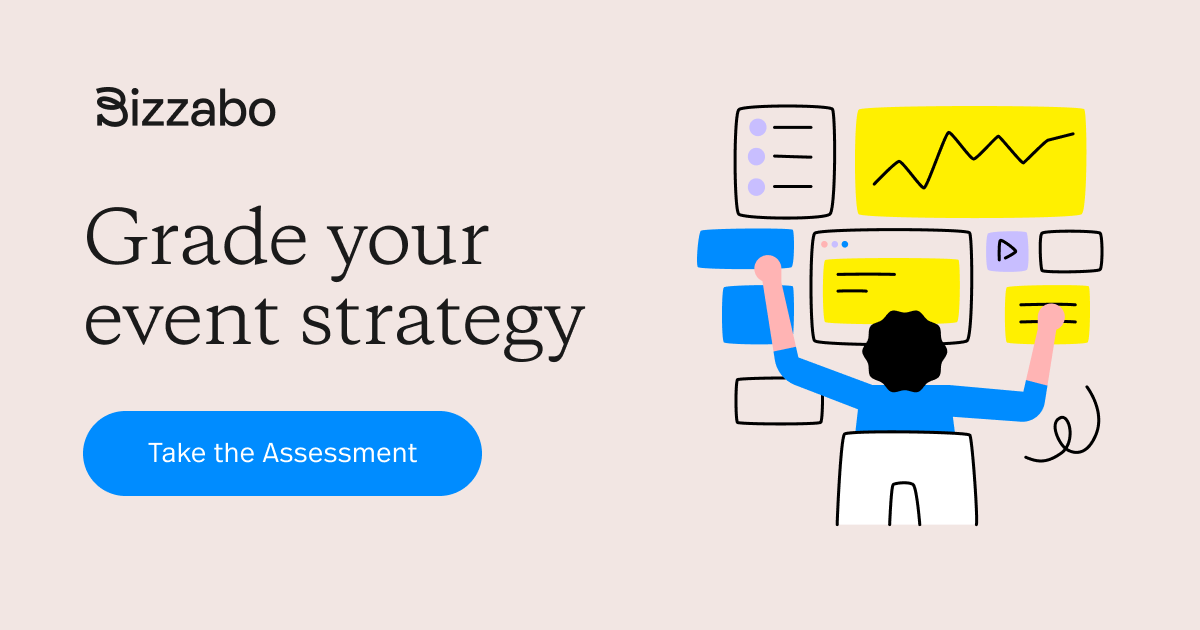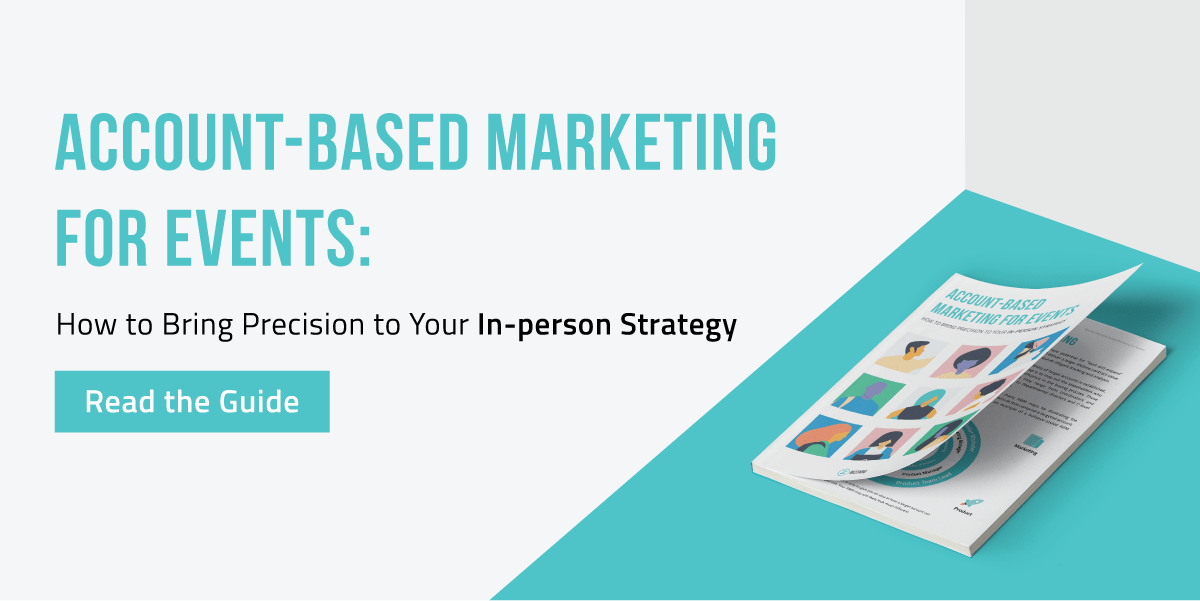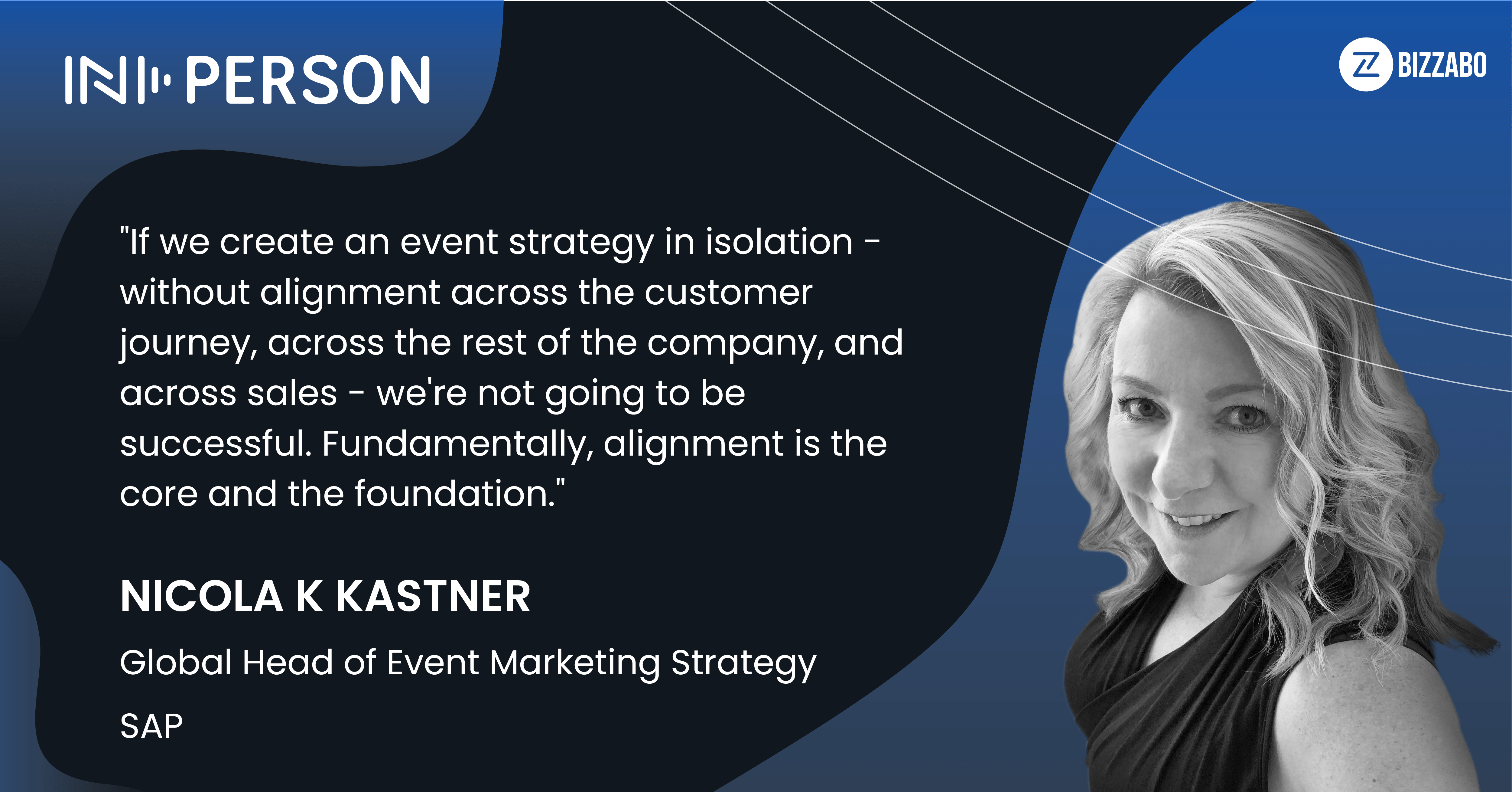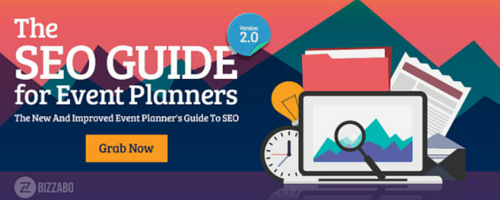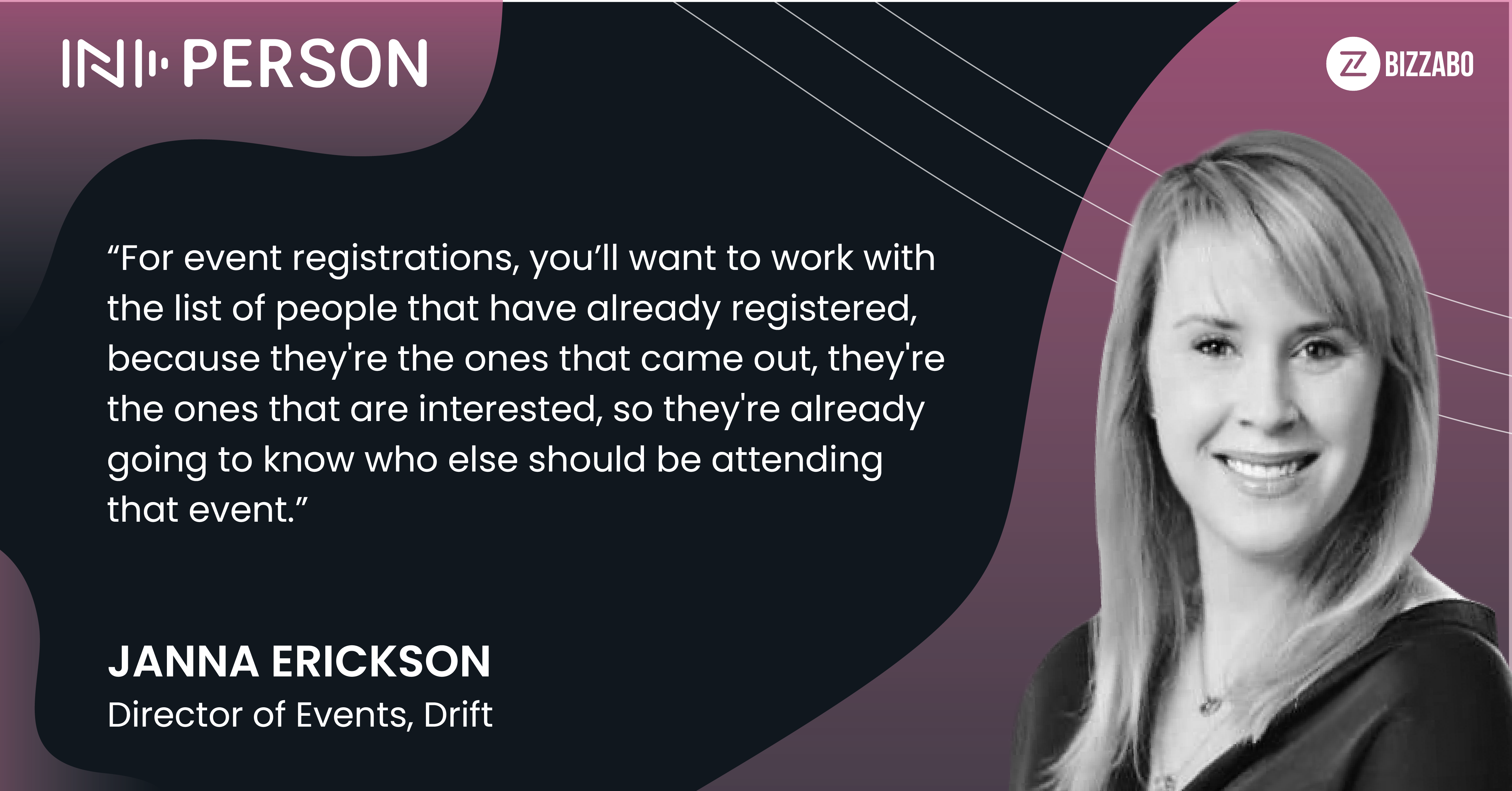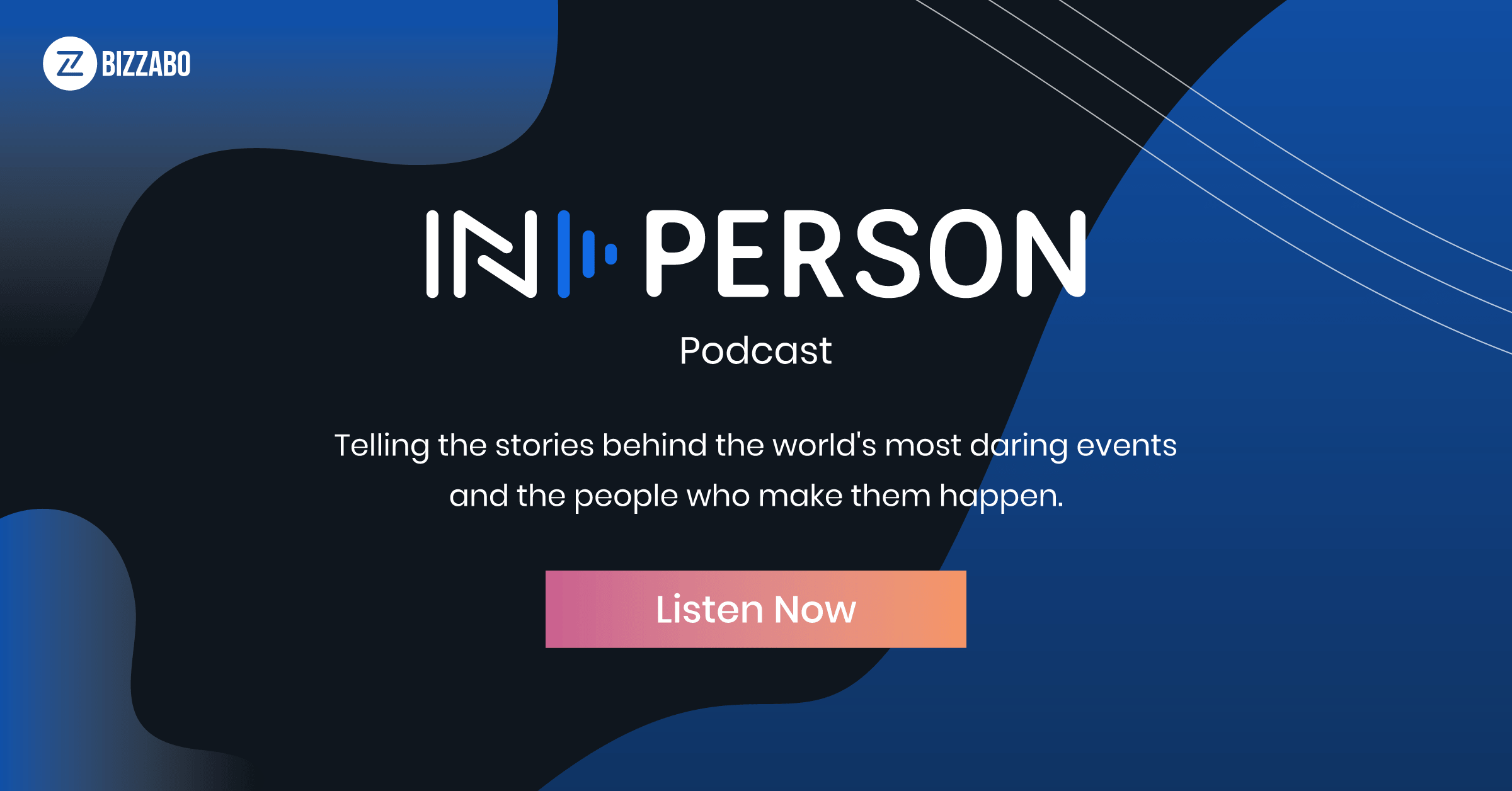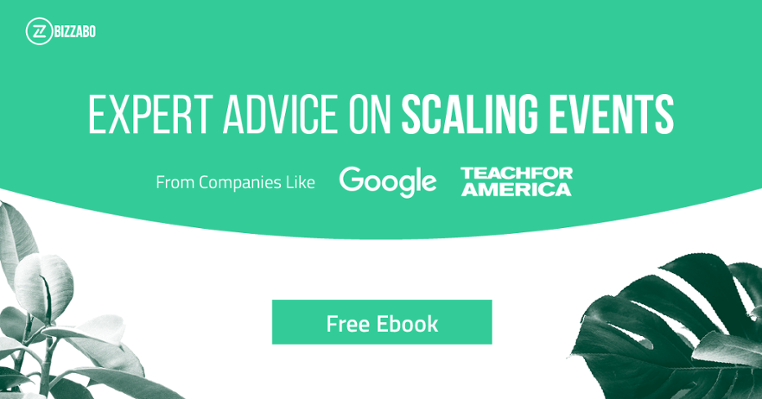Event promotion will help you drive awareness, registrations, and meet your event goals. Read on to learn how to effectively promote your event in 2021.
Event websites, emails, promo codes, PR, SEO, Google Ads, social media, attendee advocates—are you checking all of the boxes in your event promotion plan to sell out your event?
With so many different ways to market your event, it’s hard to know exactly where to start. However, once you break down your strategy into digestible pieces, it becomes a lot easier to conceive and achieve.
This guide will help you devise an actionable event promotion strategy that is specific to your event strategy. Thinking about your promotion plan as smaller initiatives will make it manageable and it’ll be easier to measure and analyze the success of your promotion strategy.
Table of Contents
- What is Event Promotion?
- How to Successfully Promote and Event
- Define Your Event Promotion Goals
- Align Your Sales and Marketing Teams
- Ways to Leverage Existing Channels
- How to Reuse Promotional Content From Previous Events
- Ways to Segment Email Campaigns
- Tips For Promoting Your Event on Social Media
- Ideas For Distributing the Promotional Efforts
- Key Takeaways
What is Event Promotion?
Event promotion is the practice of using different marketing strategies and channels to get the word out about your event and ultimately drive event registration. This can range from digital (email or social media) to print mediums (such as flyers or direct mail). In contrast, event marketing is the process of driving business goals for a product, brand, or service through in-person events.
How to Successfully Promote an Event
Coordinated campaigns that leverage multiple marketing channels are the most effective way to promote your event. Depending on your audience, there may be specific channels—like LinkedIn, email, or website – that work best to deliver your message. Be true to your event brand and don’t feel pressured to use every single channel. When it comes to event promotion, it’s about quality, not quantity.
Your event marketing and event promotion strategies should seamlessly fit into an integrated marketing campaign. Similar to multi-touch marketing, an integrated marketing campaign starts with identifying your target audience. Then you can determine which marketing channels to leverage and which messaging will resonate with your audience.
Define Your Event Promotion Goals
The first step is to identify your specific event goals because your promotional strategy will depend largely on those goals.
For example, if you’re using an account-based marketing (ABM) strategy to target specific accounts, you may want to target registrations for specific ticket types, which would require building promotions for those tickets and the corresponding attendee personas. Some metrics tied to ticket/attendee persona goals include:
- Total number of registrations
- Number of paid registrations
- Number of discounted registrants
- Number of free registrants
When aligning your promotional outreach with other teams across your organization, consider creating goals for how many registrants are attributed to specific teams.
For example, you may want to track:
- Number of registrants from customer success
- Number of registrants from sales
- Number of registrants from marketing
- Number of registrants form executive leadership
Defining your event goals and KPIs will help you build and optimize an attendee registration journey that brings the right people to your event.
Align Your Sales and Marketing Teams
Event promotion is ultimately a team sport and aligning your sales and marketing organizations is key in successfully filling the room with the right contacts.
To achieve company alignment soft skills like collaboration and communication are critical. Check out a few tactics below to help bring teams together for a common goal.
1. Align teams for your ABM strategy
Before planning your event, work with your sales and marketing leadership to craft your account-based marketing and events strategy.
You’ll want to discuss:
- Defining your target accounts and organizations
- Creating target personas
- Crafting your event message and positioning
Once you have the foundation of your ABM strategy in place, educate your sales and marketing teams. Awareness and education will empower your teams to work together and attract the right contacts to your events.
2. Get Executive Buy-In
At the end of the day, you’ll need support and investment from your executives. Be sure to articulate to your leadership how your event supports the larger business goals and drives revenue. This will help them understand why they should prioritize your event as a business objective.
Build a high-level overview or detailed presentation that clearly defines your event vision and the impact that events will have on your customers, brand, company values, and ultimately – revenue.
3. Develop clear communications and instructions
Once the teams are aligned on the value of your event, you can develop clear lines of communications. Dedicated weekly updates in the form of a town hall meeting or recurring email is a great way to keep all the stakeholders up-to-date on event targets, next steps, and areas of opportunity.
If you’re using collaboration tools like Slack, you can create designated channels for each event. For an ABM strategy, each of these channels allows you to highlight teams and individuals that helped attract target accounts and contacts.
4. Incentivize teams to share event collateral
Historically, marketing has been a one-to-many approach. However, arming different teams with event collateral and messaging will amplify your reach and help you attract groups of people and target accounts that you may not have had access to.
For example, you can provide your teams with creative banners and copy that they can share on social media. You can also give them a short email template to send to prospects, friends, and industry contacts.
5. Design competitions and spiffs to motivate your entire company
There’s something about a challenge that gets everyone motivated and excited. Once you have buy-in from your teams and have created the promotional assets for them to use, you can launch a fun competition. This approach gives everyone a stake in making the event a success.
Try organizing different business units into separate teams. Build a leaderboard and create registration goals leading up to the event and offer an award to the winning team or individuals. This introduces some friendly competition and gives everyone involved a sense of accomplishment.
5 Ways To Leverage Existing Channels
There are a few benefits to using your existing marketing channels.
- You don’t need to make extra work for yourself by trying to take on new channels
- You probably already have a following built up on your existing channels
- Using the same channels consistently strengthens your brand
- You already know which channels are reaching which people
Below are some common channels that you can leverage for your event.
1. Content Series
If your company has a blog or even a video podcast series, you can leverage those channels to promote upcoming events to your target audience.
As an example, you can include relevant call-to-action buttons at the bottom of your blog posts or add a quick shout-out at the end of your podcast. If you’re hosting a really big event, you could create a whole interview series featuring the speakers and presenters you’ll have at your event.
Remember that video is a powerful tool to use in your content marketing strategy. Shoot a “behind the scenes” series of the event to show readers the amount of meticulous planning that goes into the event and post the series on your blog. Using video content to promote your event will create a more engaging experience for readers to learn about the event.
In the example above, INBOUND created a montage of clips from INBOUND 2019 to highlight the event attendees, speakers, amazing activations, and venue specs from their most recent event. This video helped capture the energy and creativity behind their event.
The overall goal is to create content that will be valuable to your readers and drive awareness for your event. This can be an effective way to shift your blog audience from readers to event attendees.
2. Email Signature
Using email signatures to advertise your upcoming event is a great tactic because you can set it up automatically for your whole team, and they don’t even need to think about it. There’s no room for error and no effort required on their end. Plus, you can potentially reach a lot of people. In your signature, place a link to the registration page as well as a small image to promote the event.
As you can see in the example below, the team at Growth Marketing Conference used their email signatures to promote their annual conference, Global Growth Marketing Conference.

3. Newsletter
If your company is already sending out a newsletter, why not dedicate a section to marketing your event? Promoting your event through the newsletter is a good way to drive awareness while still delivering valuable content to your subscribers.
Here’s an example of a Bizzabo newsletter that includes a promotion for an upcoming event. Keep in mind that you’ll want to have separate email campaigns dedicated to promoting your event which we will dive into later.

4. Strengthen Event Website SEO
While you most likely created an event website before even setting the event promotion game-plan, there’s a difference between making a website and optimizing it.
A large part of SEO is targeting the right keywords. Summarize your event in a few words or phrases and create a keyword strategy from the group of words. Use tools like Moz’s Keyword Explorer or Keyword.io to see how often those keywords are searched and how competitive it will be to rank for those words. Below is an example of using Moz’s keyword explorer to find detailed rankings on the term “customer success conference.”
 Source: Moz
Source: Moz
Once you’ve chosen your keywords, optimize on-page elements like the title tag, meta description, and alt text to reflect those keywords. You’ll also want to make sure your website is mobile responsive as this will affect your ranking.
For more practical tips on optimizing an event website for search, click below to read our SEO Guide for Event Planners.
5. Mobilize Your Attendees
Whether you’ve already held an event or you’ve managed to secure some registrations for an upcoming event, your attendees are an invaluable asset. Audience advocacy marketing is becoming an increasingly important piece of marketing campaigns.
Encourage your attendees to spread the word by providing unique promo codes to share with their network. If they manage to bring in another registration, reward them with a partial refund on their already purchased registration, offer a discount for the newly purchased referral, or just offer them a simple gift card.
We’ll specifically discuss how to approach attendee advocacy later in this guide.
6. Enable Your Sales Team
Your sales team is on the front lines connecting with customers and prospects. Enabling your sales team to directly promote events to their prospects and customers is a really effective strategy for driving event registrations.
Create email templates, social media copy, and collateral that sales can use to send to their accounts for event promotion. You can also create tracking links and specific promo codes to help measure your sales outreach or even create a little friendly competition among the team.
How To Reuse Promotional Content From Previous Events
You can save a lot of time by building on your efforts from past event promotion and repurposing those old assets for your upcoming event. You can use existing video footage, images, and attendee reviews for pre-event content marketing and update old collateral, email templates, and email signatures to drive event registrations.
Promotional Video – Instead of just telling people that your event will be great, show them. Create a promotional video with footage from previous events to help people visualize themselves at this year’s event. You can then feature this video on email, social media, and your event website. Keep the video under one minute to increase the chances that people watch it all the way through.
Past Event Photos – Pictures allow you to showcase the energy, activations, and experiences that potential attendees can expect at your upcoming event. You can even use these photos to build excitement among people who already registered for your event.
Past Speakers – Big names will always entice people to attend events, and the reputation and experience they bring helps lend credibility to your brand and event. Highlight speakers you’ve had at past events to show common themes and establish excitement for your upcoming event.
Positive Reviews – Showcasing positive feedback from previous events will serve as proof that your event is worth attending. Place them in a visible section of the event website and let the reviews do the work for you. People tend to trust reviews more than a company’s own claims, so you can use that to your advantage and show potential registrants how much past event-goers loved your event.
Video Testimonials – Video testimonials feature attendees speaking directly to the camera about how much they loved your event last year. Try to grab footage of past speakers as well who would also speak highly of your event.
7 Ways to Segment Email Campaigns
According to the 2019 Event Marketing Benchmarks Report, most believe that email marketing is the single-most effective channel for promoting an event. One way to ensure that email remains an effective channel is to devise sound segmentation strategies to strategically promote your event.
Here are some ways you can segment your event email marketing data.
1. Industry
One of the most common ways to segment emails is according to industry. An email sent to a marketer at a tech startup should be different than an email sent to someone who works in finance. Segmenting campaigns based on your attendees’ specific industries will show them that your event content will be specifically relevant to them.
2. Job Title
Another common method of segmentation is by job function. You can deduce a lot about your attendees’ motivations based on their job title. For example, an executive will be focused on networking with other industry leaders whereas a sales associate might be focused on creating and nurturing client relationships. The information you present and how you deliver it should directly address the interests of the intended recipient, so speak to their specific motivations by segmenting your campaigns by job title.
3. Geographic Region
Location is a significant differentiator among attendees, especially if your event attracts a global audience, which many virtual events do. There are multiple ways you can personalize your content based on location. For example, some regions might be celebrating certain holidays that you can allude to. Or perhaps you can refer to the particularly cold weather of a specific area. Whichever way you choose to personalize it, segmenting your emails by region is a great way to increase engagement levels and stand out to your audience.
4. Registration Stage
 Source: Bizzabo
Source: Bizzabo
With an advanced event software system, you can filter for different registration journeys. For instance, maybe you want to reach individuals who started the registration process but did not complete it. Segmenting campaigns based on incomplete registration is a key strategy in email marketing because these campaigns target those who clearly exhibited an intent to purchase but never completed the action. Sending a follow-up email that nudges them to finish might be exactly what they need to officially register.
5. Target Account List or Tier 1 List
AMB promotional campaigns require a slightly different approach. For these, you’ll want to identify your target accounts and then create a designated email list. Once you have an accurate list, you can tailor your messaging to that particular audience. This way, your marketing team also gets some insight into what each group of accounts needs to drive more registrations. For example, based on your target account list, you may want to create a direct mail campaign with swag or complimentary gifts that add an additional personalized touch to your invitations.
6. Customer and Prospects
Your customers and prospects should be segmented into separate lists. This way, you can make sure your promotional content and event outreach comes from the right contact. Customers may be more receptive to an invite from their main POC like a customer success manager or account manager rather than a salesperson. Alternatively, a prospective customer may already be in contact with a salesperson and will likely be receptive to an invite from them.
7. Sponsors
Creating event promotion campaigns for your sponsors is a great way to drive engagement. You can tailor your messaging to include more detailed information on the value of your event, what they can expect, and give visibility on other sponsors that are participating. Creating a segment or your sponsors also gives you a channel to nurture a community of event sponsors and help set them up for event success.
As an example, for Techcrunch’s upcoming Disrupt Berlin event, the team sent out an email for sponsorship opportunities. The email offered detailed information about the event, sponsorship opportunity, and exclusive events for sponsors.
 Source: TechCrunch
Source: TechCrunch
Need a spark of inspiration for your targeted campaigns? Check out these examples of event invitations to get the ball rolling.
Tips For Promoting Your Event On Social Media
Social media platforms are a huge opportunity to promote your event. You can reach larger audiences, leverage paid strategies, and even set up events that link back to your registration page. Social media is a constantly evolving platform when it comes to best practices. Here are some tips to help you narrow down your social media strategy.
1. Consistent Hashtags/Handles

Decide on a hashtag for your event and use it across all event collateral and touchpoints. This will tie your social media campaign together and help potential attendees quickly find your social channels. It also brands your event and creates consistency across your platforms that will add trust and credibility to your event. Hashtags are also a great way to keep the event momentum going before, during, and after your event. Encourage your attendees to post using your hashtag to drum up excitement on social media.
Ideally, the handle and hashtag will be the same. The key here is to claim your hashtag and handle early on to avoid losing it to someone else. Do some research ahead of time to ensure that the hashtag you want isn’t being used already.
2. Retargeting Ads on Facebook
Social media is a great opportunity to reach back out to people who have already visited your website but have not registered. And Facebook is one of the best social media platforms to do this. Seal the deal by retargeting these potential attendees and getting them back to your event website.
To target visitors who have already visited an event website, insert the HTML code provided by Facebook and it will track the visitor until they open Facebook. Once the visitor is on Facebook, they will see an ad reminding them to register for the event.
For in-depth tips on these types of ads, check out this blog post on event retargeting.

An example of a retargeting ad on Facebook
3. Sponsored Content on LinkedIn
Another form of paid social media is LinkedIn’s sponsored content. This feature allows you to promote your event to the specific audience of your choice by having those ads appear on their LinkedIn newsfeed.
LinkedIn’s native advertising is especially effective because of its database of millions of professional profiles. With this type of data, you’ll be able to market your event to the types of attendees that will find the most value from your event and likely, those attendees are exactly your target audience.
4. Snapchat/Instagram Geofilters
Snapchat and Instagram let businesses purchase and customize their own filters. You can design a custom filter for your specific event location and choose how long it is live for. As soon as attendees are in the location parameters, they’ll have exclusive access to your custom branded filter. This type of native ad is ideal for events because it encourages attendees to create and share self-produced content.
5. Post-registration Referral Links (Attendee Advocacy)
Tap into your attendees’ full potential and turn them into advocates. Generate referral links for people who have just registered for your event so that they can share it on their own social networks.
Create an incentive where the original registrant receives a discount or swag item every time someone new registers with their unique link. This type of organic referral campaign can do a lot of the promotional for you.
While there are several ways to orchestrate a campaign like this, tools like Ticket Boost from Bizzabo provide a streamlined approach with customization options and analytics.
Below is an example of how event organizers can build and monitor their Ticket Boost campaigns.

Source: Bizzabo
6. Snapchat/Instagram Geofencing
Instagram now allows businesses to use geofencing to serve more targeted ads based on user locations and you can promote content for upcoming or ongoing events. You can also leverage content from the Stories feature to serve up more interactive content to your potential attendees.
7. Twitter Campaigns
Twitter is a great platform to promote your event but it’s a great channel for engaging in conversations and creating community. Try using a trending topic and hashtag to build out a promotional contest where potential attendees can snag a ticket. This will create more buzz around your event and drive registrations.
 Source: Twitter
Source: Twitter
For example, at HubSpot’s flagship event INBOUND, the team launched a fun campaign for the trending hashtag #fridayfeeling to find any person with the name Jennifer. Those with the namesake were given a chance to win a pass to see the actress turned entrepreneur/INBOUND19 speaker, Jennifer Garner!
3 Ideas for Distributing Promotional Efforts
Event promotion is not an easy task so why not share the load? All great event marketing plans require a helping hand. Here are some ways you can distribute the promotional efforts to ensure that you are bringing in other stakeholders who can help market your event.
Team Up With Your Sponsors – Given that your sponsors most likely have resources and an audience that you won’t have access to on your own, propose some joint marketing ideas. This could be your event sponsors sharing your event on social media, including it in their newsletter, or creating partnered content that promotes the event. Remember, your sponsors want you to have a successful event so don’t hesitate to propose ideas that will help to get you there and drive more ROI for everyone involved.
Influencer Marketing – All industries have thought leaders who have a certain degree of influence. If you know any influencers whose audiences align with your target attendees, reach out to them to discuss possible partnership marketing opportunities. Tap into your greater network of professional contacts to see if you already know an influencer through another connection. Even easier, reach out to the speakers on your panel and make sure they’re promoting the event as well. Brainstorm different ideas to make use of their influence in the industry.
Internal Team Buy-in – Remember that there are other people in your company, not part of the event marketing team, that can share some of the responsibility. Remind them that a successful event is a win for the entire company. Encourage your sales, customer success, engineering, and any other team to help with event promotion. You can gamify their efforts by creating tracked promo codes for each team and rewarding the team with the most registrations with a cash prize, team bonding activity, or another incentive. Get creative to ensure collective buy-in.
Key Takeaways: Your Event Promotion Strategy
No matter what your event type, there are plenty of ways to create an effective event promotion strategy. Here are the main things to keep in mind:
- Define your event promotion goals to build the right promotional strategy.
- Align your sales and marketing teams to drive higher organizational engagement and buy-in.
- Leverage your existing marketing channels for highly effective event promotions.
- Repurpose content from previous events to help promote your upcoming events.
- Segment your audiences to create more targeted and effective messaging.
- Join the conversation on social. Use different channels and promotional strategies to drive more engagement on all your social media outlets.
- Reach out to sponsors, speakers, and other teams within the company for joint promotional ideas to ensure that you are taking full advantage of their wide networks.
Use these tips and takeaways to create a promotional strategy that is right for your event. With the right resources and knowledge, event promotion becomes less of a daunting task and more of an achievable challenge.
Looking for more inspiration? Check out these event promotion ideas.
Editor’s Note: This post was initially published on January 18, 2018 and has since been updated.
Click here to see original post


